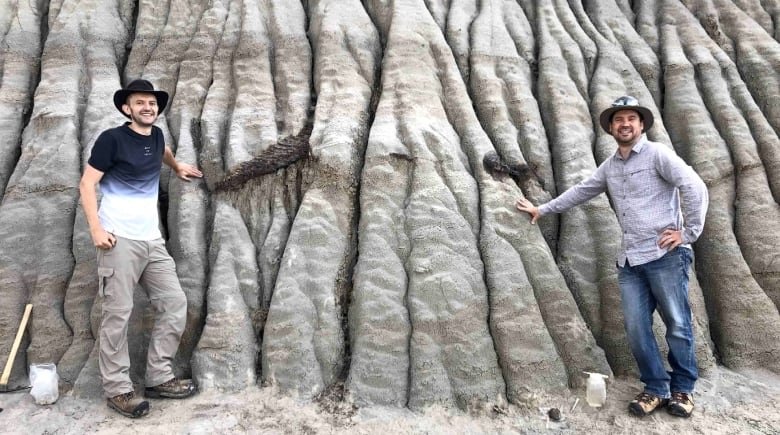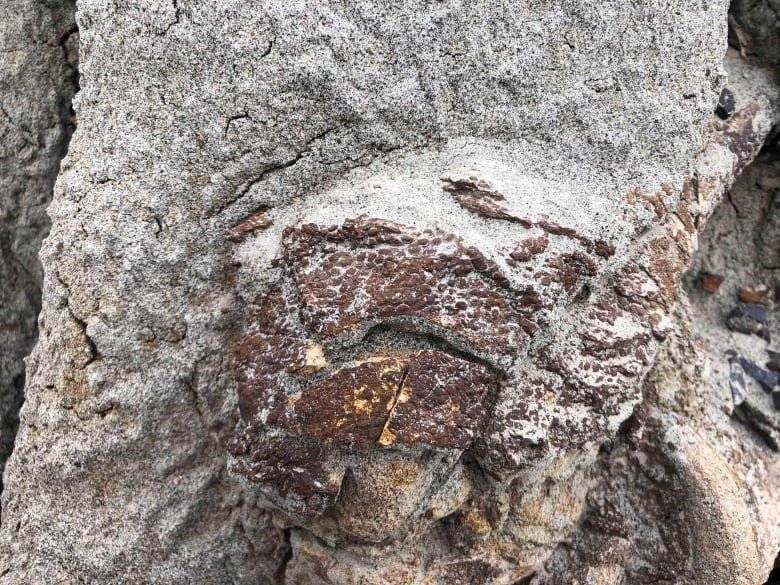Discovery of Giant Dinosaur Fossil with Skin in Southern Alberta Excites Paleontologists
Bone hunters from around the world regularly travel to Dinosaur Provincial Park in the southern Alberta badlands — but the recent discovery of a hadrosaur fossil is causing a lot more excitement than usual.
Kaskie volunteers in a field school at the park run by Brian Pickles, a professor from the University of Reading in England. He and his colleagues bring students from the United Kingdom and Australia to learn and test field techniques in Alberta.
Kaskie came across a cliff and noticed a fossilized bone sticking out of it. Upon closer inspection, she realized it was larger and more intact than anything she had ever seen.

“I instantly went up to Brian and, like, you need to come to take a look at this! And as it turned out, it was something really cool,” Kaskie said.
What she found was a young hadrosaur so well preserved that it still had skin on it. Pickles knew it was a significant find and brought it to the attention of the Royal Tyrrell Museum of Paleontology in Drumheller, Alta.
Experts say hadrosaur skeletons are common in the area, but to find one as well preserved as Kaskie did is very rare.”We took so many photos. We sent them to the Royal Tyrrell Museum staff [and said], ‘Hey, I think we found something really big here,’” said Pickles.
Skin on fossils ‘quite rare’When it comes to dinosaurs, Alberta has a rich fossil heritage, according to Caleb Brown, curator of dinosaur systematics and evolution at the Royal Tyrrell Museum.

“Dinosaur Provincial Park is kind of the crown jewel of that. There’s no other place in the world that has the same abundance of dinosaur fossils and the same diversity of dinosaur fossils in a very small area,” he added.
Hadrosaurs were herbivorous duck-billed dinosaurs, commonly referred to as the cows of the Cretaceous period.
According to Brown, around 400 to 500 dinosaur skeletons or skulls have been excavated from the area. So, finding dinosaur bones in the area is not hard. But finding one where all the bones are still in the same position they would be in life is uncommon.
“And finding one that has a lot of skin on it is quite rare.”